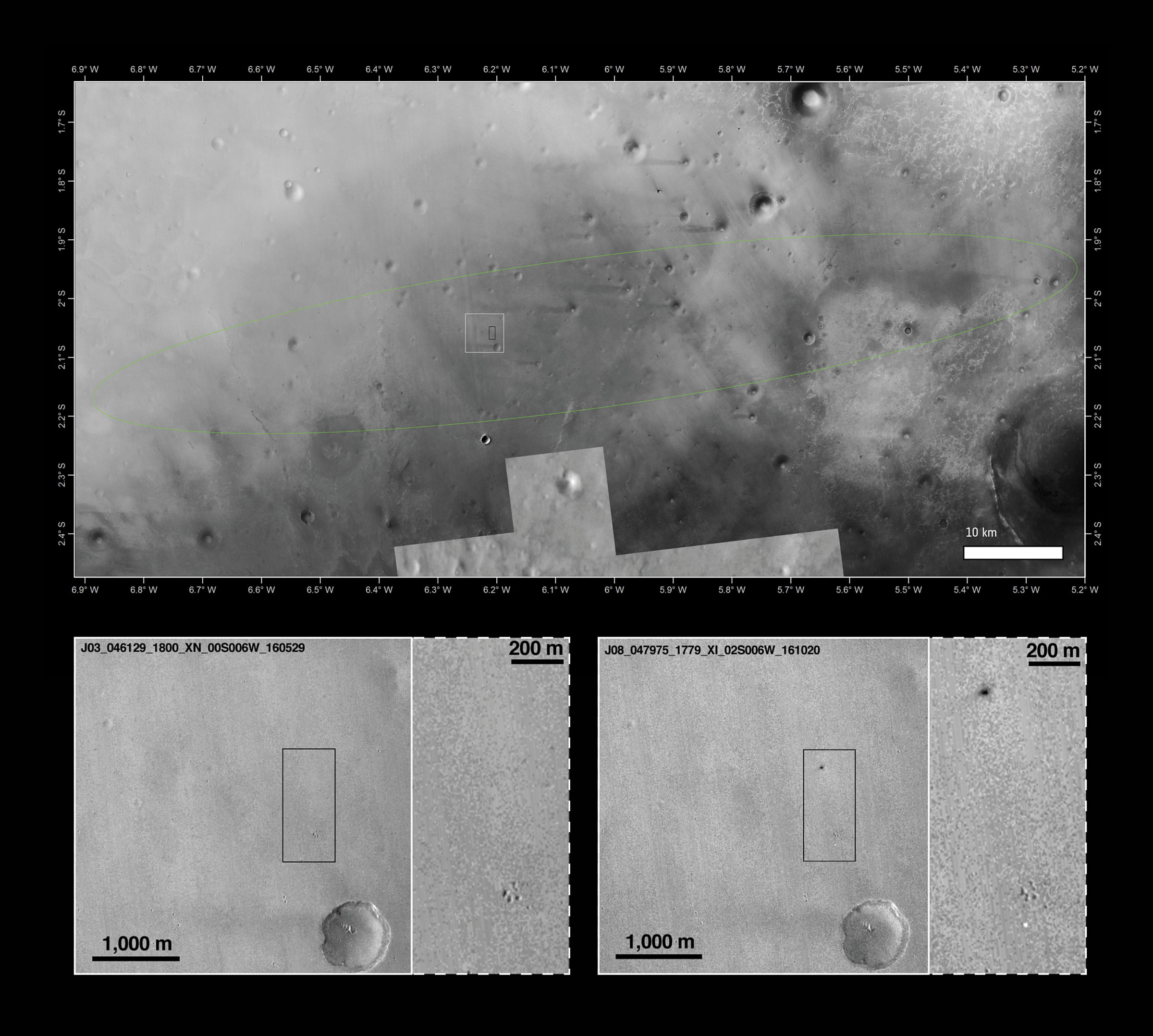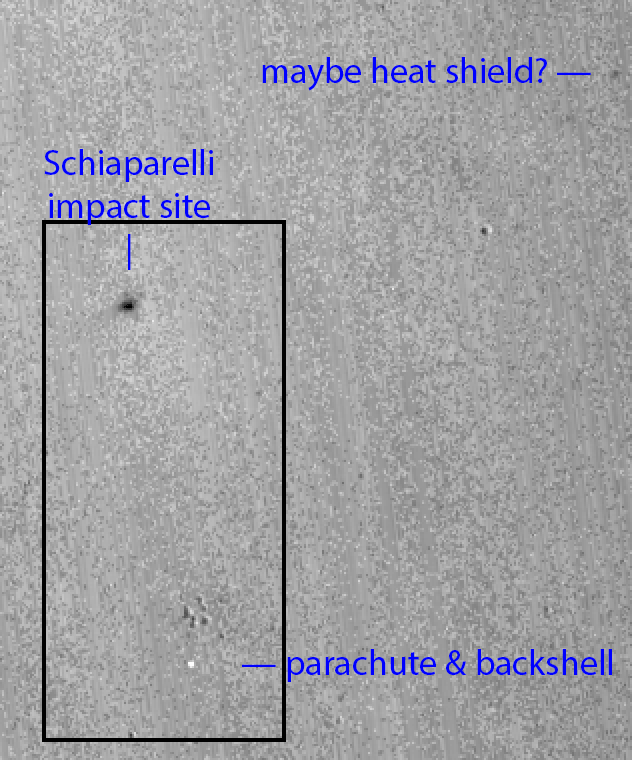Bruce Murray Space Image Library
Schiaparelli landing site, after landing attempt

Below the main image are a pair of before-and-after images, taken by the CTX camera on 29 May 2016 (left) and 20 October 2016 (right), respectively. The 20 October image shows two new features appearing following the arrival of the Schiaparelli test lander module on the martian surface on 19 October.
One of the features is bright and can be associated with the 12-m diameter parachute used in the second stage of Schiaparelli’s descent, after the initial heat shield entry. The other new feature is a fuzzy dark patch roughly 15 x 40 meters in size and about 1 kilometer north of the parachute. This is interpreted as arising from the impact of the Schiaparelli module itself following a much longer free fall than planned, after the thrusters were switched off prematurely. NASA / JPL / MSSS / ASU / ESA
ESA identified two pieces of hardware (within the rectangle), but a possible third piece may also be visible: the heat shield. A smudge is located about 1.3 kilometers to the east-northeast of the lander crash site, which is the correct direction and a reasonable distance, based on comparison to the Curiosity landing site.



 Explore Worlds
Explore Worlds Find Life
Find Life Defend Earth
Defend Earth

